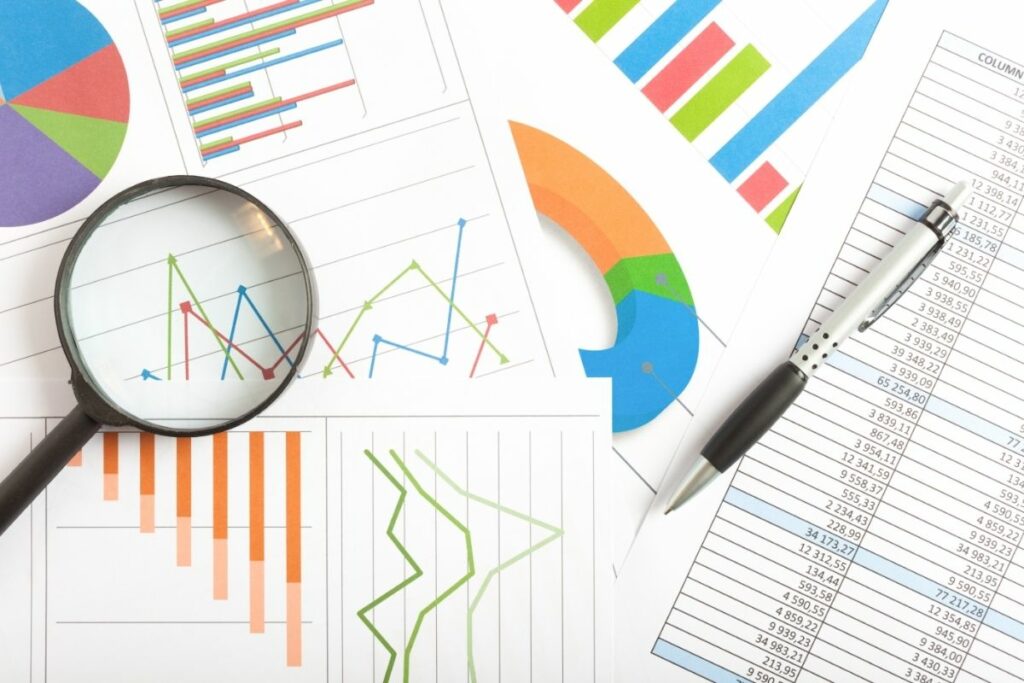Data Analytics is the practice of analyzing large amounts of information to gain insights into trends, patterns, and other useful information.
Data analytics is a key part of every organization today, whether they are big or small.

What’s more, data analytics has become a critical component of modern businesses.
The amount of data generated by organizations continues to increase at an exponential rate. This data is often stored in databases, spreadsheets, or text files.
In short, data analytics is the practice of analyzing data to gain insights into trends and patterns.
What Exactly Is Data Analytics?
Data analytics is an important part of any business. It helps companies understand what is happening in their businesses and how to improve performance.
At its core, data analytics is the process of analyzing raw information to find trends and answers.
There are several steps involved in the process.
First, descriptive analytics is done to describe past events. Then predictive analytics is done to predict future events.
Finally, prescriptive analytics is done to suggest ways to improve processes.
Each step requires a different set of skills. There are furthermore components and nuances to each umbrella term, but these are three very common types of analytics.
Furthermore, a successful data analytics project will follow the steps outlined above.
Descriptive analytics is considered as basic analytics, while the latter two are an aspect of advanced analytics.
Advanced Analytics is the next step after basic analytics. It uses advanced tools to analyze large amounts of data and make predictions.
It helps companies understand what is going on and the reasons why.
Before analytics occur, the first step in data analytics is collecting the right data. Once you have collected all that data, it needs to be organized properly so that it can be analyzed.
Then, the data needs to be transformed into a format that makes sense for the type of analysis being done.
Finally, the data needs to undergo some form of analysis.
Descriptive Analytics
Descriptive analytics answers the question “What happened?”. It analyzes historical data to answer questions about past events.
Usually, a part of descriptive analytics involves measuring traditional indicators.
An example of a traditional indicator is a return on investment (ROI). With that said, the type of indicator used will depend on what industry the company falls under.
At its core, descriptive analytics is designed to answer questions about past events, using historical data. These questions may include:
- How many people visited our website last month?
- Which products did we sell most frequently?
- Why was there a sudden drop in sales?
Descriptive analytics cannot make predictors, nor should it be used to inform any decisions. What it can provide, is a very accurate summary of what has happened within the company.
It describes past failures, and past successes of the company, and is essential for understanding the past performance of the company.
Predictive Analytics

Predictive analytics answers the question “Will this happen?”.
The goal of predictive analytics is to help a company make better decisions, by predicting future outcomes.
What’s interesting about predictive analytics, is that it uses the data provided by historical data to identify any trends.
The probability of whether the trends or patterns will occur is then analyzed.
As an example of predictive analytics in practical use — it is often used by marketing departments to determine which customers are likely to buy specific items.
So, the results of predictive analytics are usually presented in terms of probabilities.
This means that they tell us how likely something is to happen based on previous data.
For example, if you were trying to predict whether a customer would purchase a product, then you might ask whether the likelihood of them purchasing that product is greater than 50%.
It’s a very important component of advanced analytics, as it analyzes the likelihood of different outcomes.
Prescriptive Analytics
Prescriptive analytics answers the question “What should I do?”.
Prescriptive analytics is used to identify what steps a company should take, and as such, it can recommend solutions. This is where the true power of data comes into play.
By analyzing the data, prescriptive analytics can identify potential issues with the company, and potential opportunities for success.
As prescriptive analytics is a type of analytics that helps answer questions about what to do, it can be used to make data-driven decisions.
This can enable companies to make informed decisions if they are facing uncertainty.
Prescriptive analytics is a type of machine learning that relies on pattern recognition.
Furthermore, by analyzing past events and past decisions, prescriptive analytics can predict and estimate the likelihood of various outcomes.
It’s a very useful component of advanced analytics that can aid companies into making the right choices based on estimation and prediction.
Why is Data Analytics Important?
Data analytics is one of the most powerful tools available to businesses today. It provides a number of benefits, including:
- Increased Productivity
If your business depends on having access to information, then data analytics is going to give you more time to focus on other tasks.
By providing a detailed analysis of the current state of your business, you can get rid of guesswork and waste time.
- Better Customer Service
When you have access to all the details of your business, you’ll be able to respond quickly to customer queries.
You’ll also be able to offer a personalized experience, instead of just giving the same generic response to every query.
- Improved Marketing
Marketing is a vital part of running a successful business. When you know exactly who is interested in your products/services, you can target them appropriately.
- Faster Innovation
By using data analytics to find new ideas, you’re able to develop innovative products faster.
This means that you can stay ahead of competitors and deliver superior service.
Summary
With data analytics, you can find out exactly where your company stands relative to its competitors.
You can identify problems and opportunities faster than ever before. And, you can make better decisions for your business.








